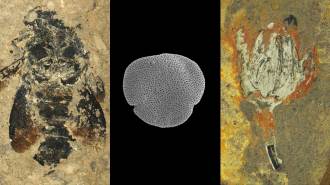Single gene influences a petunia’s primary pollinator

UV LIGHT Mutations of a petunia plant gene determine how much ultraviolet light the plant’s flower absorbs. The mutation could mean the difference between which animal pollinates the plant’s flowers.
Alexandre Dell’Olivo







